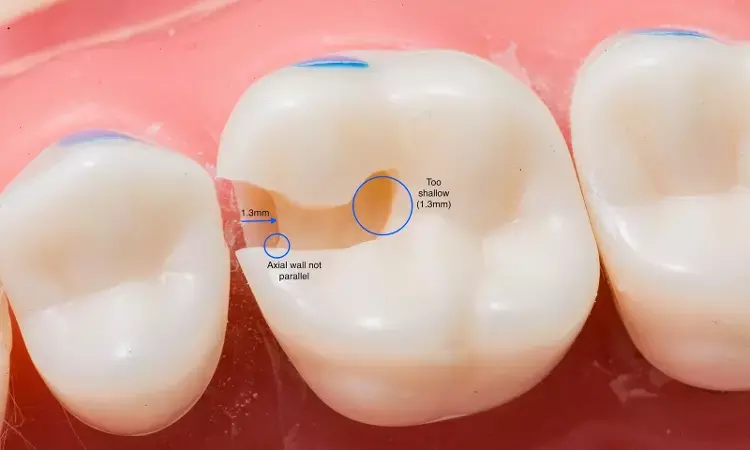- Home
- Medical news & Guidelines
- Anesthesiology
- Cardiology and CTVS
- Critical Care
- Dentistry
- Dermatology
- Diabetes and Endocrinology
- ENT
- Gastroenterology
- Medicine
- Nephrology
- Neurology
- Obstretics-Gynaecology
- Oncology
- Ophthalmology
- Orthopaedics
- Pediatrics-Neonatology
- Psychiatry
- Pulmonology
- Radiology
- Surgery
- Urology
- Laboratory Medicine
- Diet
- Nursing
- Paramedical
- Physiotherapy
- Health news
- Fact Check
- Bone Health Fact Check
- Brain Health Fact Check
- Cancer Related Fact Check
- Child Care Fact Check
- Dental and oral health fact check
- Diabetes and metabolic health fact check
- Diet and Nutrition Fact Check
- Eye and ENT Care Fact Check
- Fitness fact check
- Gut health fact check
- Heart health fact check
- Kidney health fact check
- Medical education fact check
- Men's health fact check
- Respiratory fact check
- Skin and hair care fact check
- Vaccine and Immunization fact check
- Women's health fact check
- AYUSH
- State News
- Andaman and Nicobar Islands
- Andhra Pradesh
- Arunachal Pradesh
- Assam
- Bihar
- Chandigarh
- Chattisgarh
- Dadra and Nagar Haveli
- Daman and Diu
- Delhi
- Goa
- Gujarat
- Haryana
- Himachal Pradesh
- Jammu & Kashmir
- Jharkhand
- Karnataka
- Kerala
- Ladakh
- Lakshadweep
- Madhya Pradesh
- Maharashtra
- Manipur
- Meghalaya
- Mizoram
- Nagaland
- Odisha
- Puducherry
- Punjab
- Rajasthan
- Sikkim
- Tamil Nadu
- Telangana
- Tripura
- Uttar Pradesh
- Uttrakhand
- West Bengal
- Medical Education
- Industry
Decayed, Missing due to caries, and Filled Teeth index significantly associated with UDA events

Decayed, Missing due to caries, and Filled Teeth index is significantly associated with Unscheduled dental attendances (UDA) events, according to a recent study published in the British Dental Journal.
Unscheduled dental attendances (UDA) and the associated morbidity can cause individual distress, disrupt military effectiveness and have broader societal impacts. Preventing future dental morbidity is an essential component of dentistry. This, the largest study of its type, aimed to examine the relationship between clinical and demographic variables and UDA and to quantify how well military dental risk categorisation predicts subsequent UDA events.
This is a retrospective cohort analysis of a clinical dataset containing 175,558 service personnel over an 11-month period. Statistical methods examined: sensitivity and specificity of the existing NATO 'Dental fitness classification system' (NATO Cat) in predicting UDA, relative risk (RR) of UDA by selected variables, Kaplan-Meier failure analysis and multivariate analysis.
The results of the study are:
A total of 16,722 UDA events were recorded, the majority (66.7%) were due to caries, periapical pathology and fractured teeth or restorations, or a combination thereof. NATO Cat yielded poor predictive sensitivity (sensitivity 10%, specificity 93%). NATO Cat 3 (RR 1.47), age group (RR 1.06-2.05), gender (RR 1.46) and DMFT category (RR 1.09-3.05) were all significantly associated with increased UDA. The RR of UDA increased by 5% (RR 1.05) for each additional DMFT increment in a logistic regression model.
Thus, after adjusting for confounding variables, DMFT was significantly associated with UDA events. This study indicates that, even when treatment need has been met, a residual risk remains that is directly related to exposure to dental disease and operative dentistry. Strategies which prevent downstream operative treatment needs and increases in DMFT may also reduce future UDA. UDA may be a useful quality outcome indicator for the success of NHS dental services in securing oral health.
Reference:
A bridge too far? The relationship between interventive operative dentistry and future dental morbidity by Mark Dermont et al. published in the British Dental Journal.
https://www.nature.com/articles/s41415-019-0147-4
Dr. Shravani Dali has completed her BDS from Pravara institute of medical sciences, loni. Following which she extensively worked in the healthcare sector for 2+ years. She has been actively involved in writing blogs in field of health and wellness. Currently she is pursuing her Masters of public health-health administration from Tata institute of social sciences. She can be contacted at editorial@medicaldialogues.in.
Dr Kamal Kant Kohli-MBBS, DTCD- a chest specialist with more than 30 years of practice and a flair for writing clinical articles, Dr Kamal Kant Kohli joined Medical Dialogues as a Chief Editor of Medical News. Besides writing articles, as an editor, he proofreads and verifies all the medical content published on Medical Dialogues including those coming from journals, studies,medical conferences,guidelines etc. Email: drkohli@medicaldialogues.in. Contact no. 011-43720751


